HISTORY
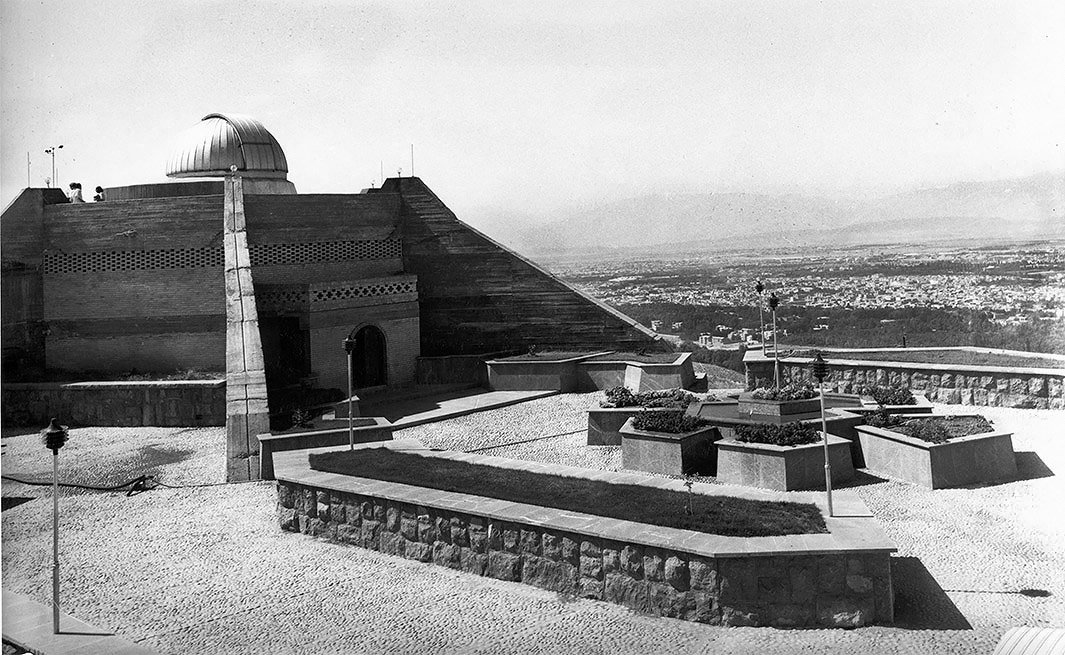
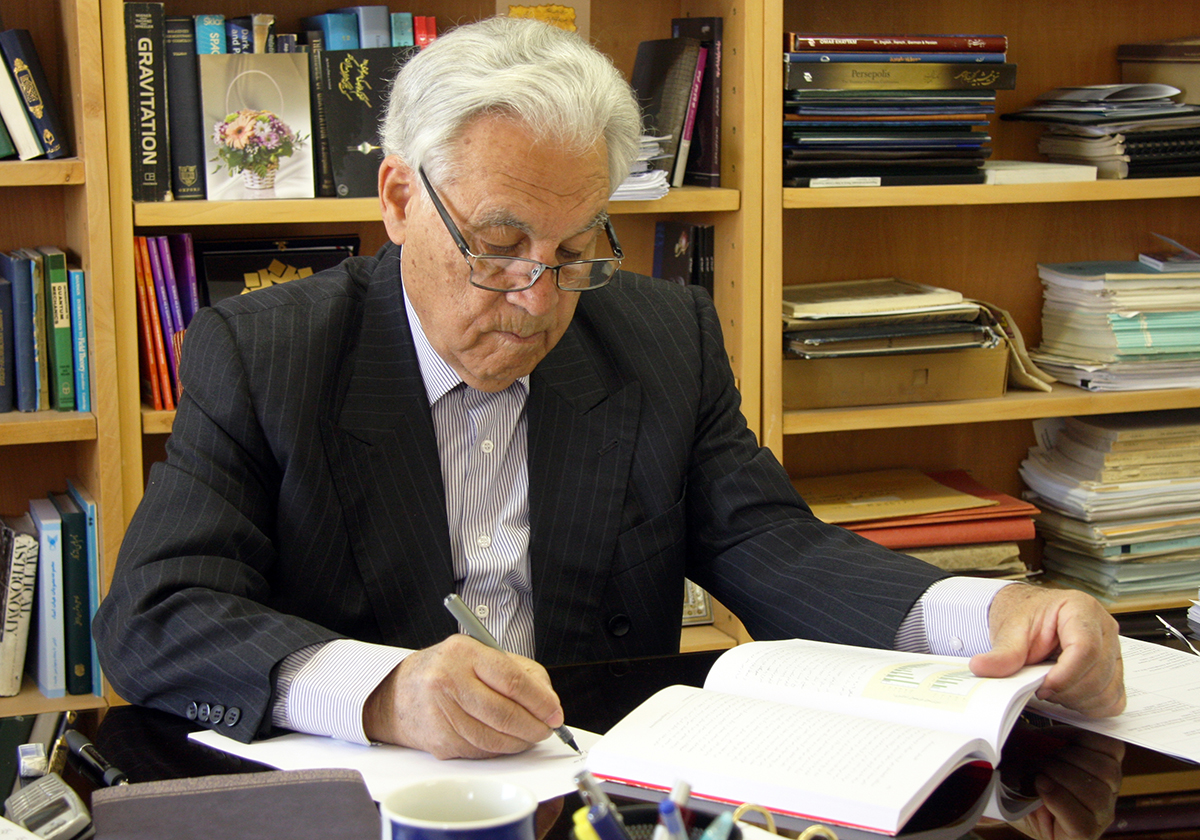
Prof. Yousef Sobouti, the founder of Biruni Observatory
Biruni Observatory is the first professional astronomical observatory built in Iran after the Islamic Golden Age (8th – 15th centuries). (*Indeed, the first one, was built in 1960 for the Geophysics Institute of the University of Tehran, however, it had a small telescope and was used only for solar observations). The Biruni Observatory is located on top of a hill, in the northwest of Shiraz, and is connected to the main campus of the Shiraz University via Safa Road. The elevation of the observatory from the sea level is 1740 meters and about 180 meters above the city of Shiraz. The name was inspired by Abu-Reyhan Al-Biruni, one of the greatest scholars in astronomy, mathematics and natural sciences of the 10th century. He proposed a method for estimating the Earth's radius and commented favorably on the Earth's rotation.
The idea to build this center was proposed by Prof. Yousef Sobouti in late 1960's to promote observational astronomy and training a new generation of astronomers in Iran prior to building a large national telescope. In Fall 1969, Prof. Robert H. Koch (1929-2010), the head of the department of Astronomy & Astrophysics of the University of Pennsylvania, visited Shiraz to evaluate a possible construction of an observatory for Shiraz University. He encouraged Shiraz University and proposed his suggestions for developing Astronomy in Iran. The idea pursued by Prof. Sobouti and in 1972, the telescope was finally ordered from the Astro Mechanics company in the United States of America with a cost of about 50K US dollars. Prof. Koch, also became a principal advisor to the Biruni Observatory during the construction.
The construction of the building and the observatory's road was started in 1972 and finished in 1976. The main telescope with a 20" (0.5 meter) primary mirror and the photoelectric photometer device were finally installed with the help of Prof. Edward Guinan, who was invited by Prof. Sobouti and became a staff member of the Physics department of Shiraz University (1975-1977). The telescope received its first light in March 1977.
In its first 15 months, 1400 hours of observations were obtained and in 1978 the Biruni Observatory participated in a number of internationally coordinated programs involving ground-based and satellite observations. This was believed to be a "Renaissance of Astronomy in Iran" by Prof. Guinan. He initiated observing variable stars, in particular, eclipsing binaryies, which later became the main research activity of the Biruni observatory. Over the past 40 years, this field of research has been spread over different universities in Iran and many researchers have been engaged in observing variable binary stars.

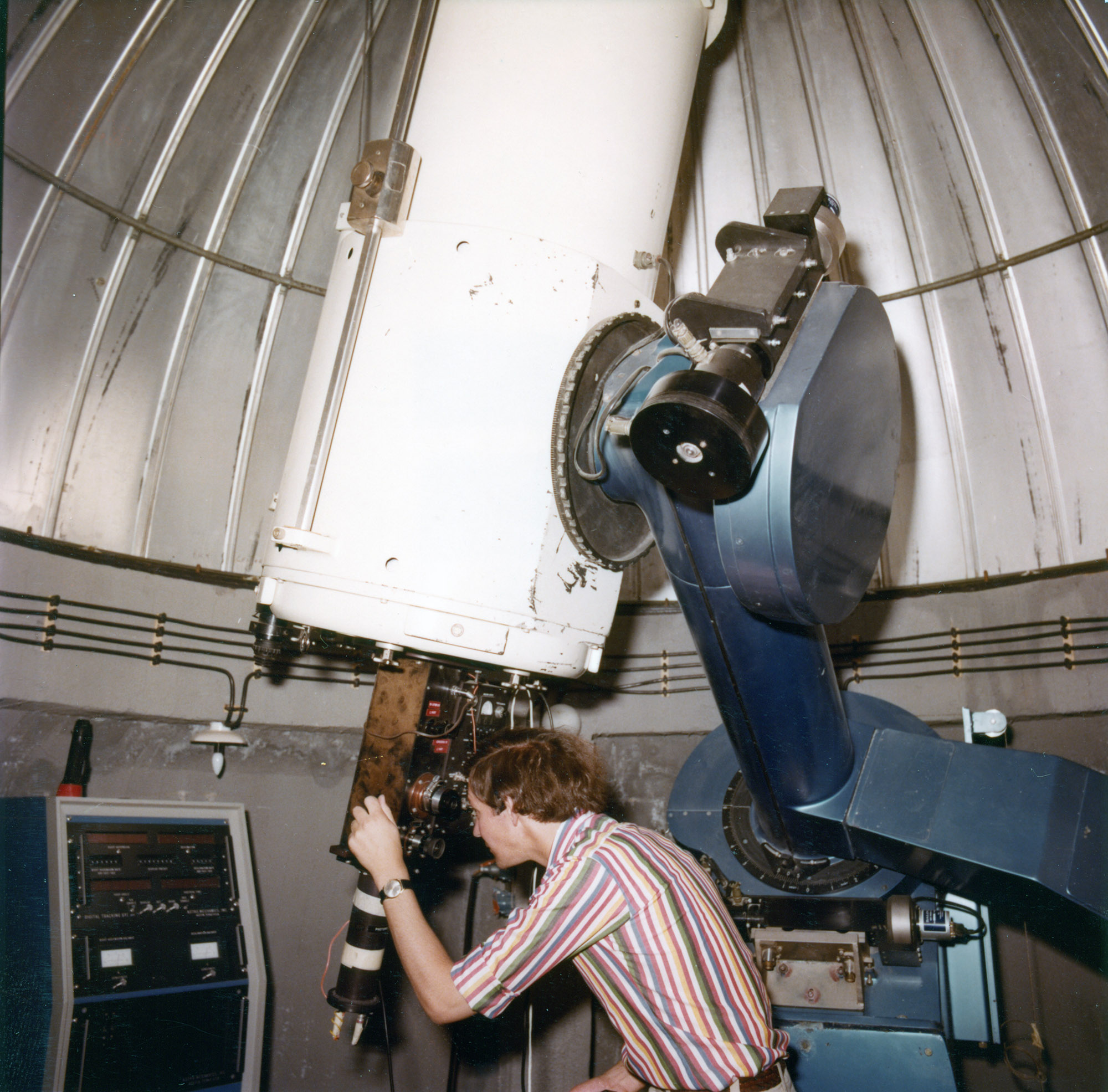
In 1977, the first meeting of the Iranian Astronomical Society was held by the Biruni Observatory and a number of international scholars visited the observatory during the first years, including Sir Fred Hoyle in October 1977. Since then, theoreticians from the Physics department of Shiraz University have also joined this center and expanded the research activities into the fields of the stellar structures, general relativity, and cosmology.
The observatory has also been a place for students who are enthusiastic about astronomy and willing to become familiar with observational techniques. Many of them inspired to continue their education in observational astronomy to the highest level. In addition, this center has an active outreach program. A range of visitors, from schools, universities and community groups visit the observatory to inform about the research activities in the observatory and becoming familiar with astronomical studies.
In general, Biruni Observatory has played an important role in developing modern Astronomy in Iran. Today, Biruni observatory is still an active Astronomy & Astrophysics research center of Shiraz University. The main telescope is equipped with the new instruments and is used for both research and educational purposes. Smaller telescopes are also available and frequently used for different tasks. Theoretical and observational Astrophysics and Cosmology are the main area of interest for the researchers at this center. The international Astronomers are visiting the observatory regularly.
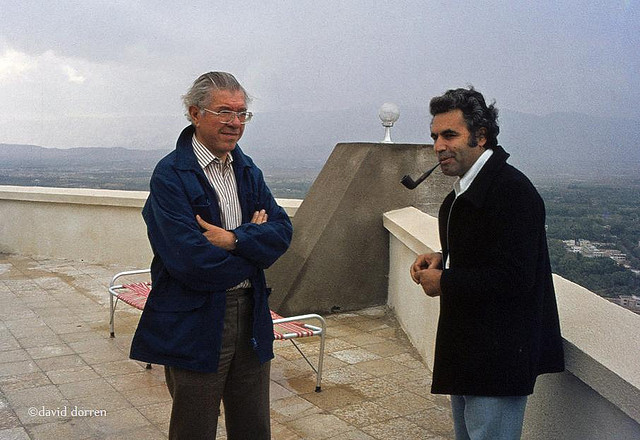 Sir Fred Hoyle(left)andProf. Yousef Sobouti (right), Biruni Observatory, Oct. 1977
Sir Fred Hoyle(left)andProf. Yousef Sobouti (right), Biruni Observatory, Oct. 1977